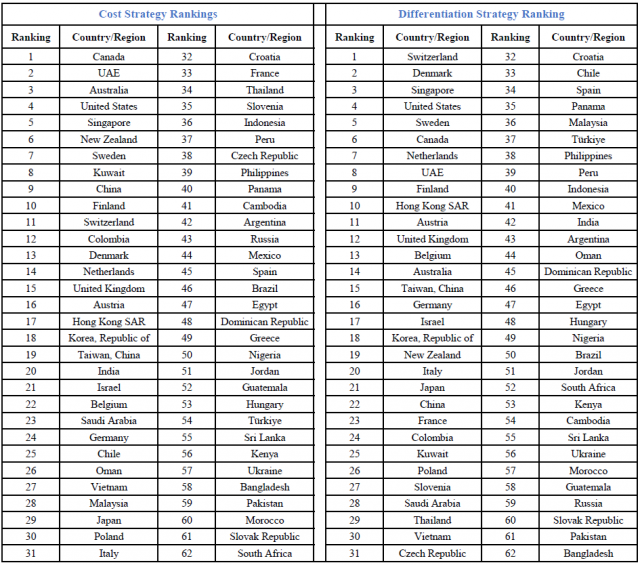Geopolitical Tensions Reshape Global Competitiveness: Insights from th…
애즈뉴스
0
11.01 02:12
SEOUL--(Korea Newswire)--The results of the ‘Global Conference on IPS National Competitiveness Research’ were released on October 29, 2024. This conference was organized by aSSIST University, the United Nations Institute for Training and Research (UNITAR), and SDG Management School; sponsored by Kyung-In Broadcasting Co., University News Network (UNN), and the Washington Times; and hosted by the Institute for Policy and Strategy on National Competitiveness (IPSNC).
There are three key global institutions that release national competitiveness ranking reports annually: The International Institute for Management Development (IMD), the World Economic Forum (WEF), and IPSNC. Both the IMD and WEF each release a single overall competitiveness ranking, while IPSNC differs by releasing two distinct strategy rankings—cost and differentiation strategies. By effectively leveraging the two strategic options, they can positively influence their rankings.
Global Focus: US-China Conflict
The IPS strategy rankings 2024 provide critical insights into how geopolitical tensions are reshaping the landscape of national competitiveness across the globe. This year, the report comes at a particularly sensitive time, offering clues about the repercussions of the US-China conflicts on national strategy rankings.
In a year marked by escalating global tensions, the US and China followed divergent paths in their competitiveness rankings. The US ranked fourth in both Cost Strategy (CS) and Differentiation Strategy (DS) categories (out of 62 countries/regions). This positive trajectory implies that the US’s focus on innovation and industrial development has been effective, potentially mitigating some of the adverse effects of its geopolitical challenges. In sharp contrast, China experienced a significant setback, dropping to 22nd place in the DS ranking, while maintaining its 9th place in the CS ranking. This decline indicates that ongoing geopolitical disputes have undermined its competitive edge on the global stage. Despite their differences and conflicts over sensitive issues, such as political systems, culture, and ideology, there is a room for cooperation as well as competition between the two. The analysis of the US and China will give important implications for other economies to analyze their competitive and cooperative relationship with other economies.
About IPS Model for National Competitiveness and 2024 Rankings
IPSNC evaluates national competitiveness using eight factors, divided into four physical and four human elements. The physical factors encompass factor conditions, business context, related industries, and demand conditions. The human factors include workers, policymakers & administrators, entrepreneurs, and professionals. When a country/region adopts a cost strategy, more weight is inherently given to cost-driven elements like factor conditions and workers. Conversely, when a differentiation strategy is utilized, the weightings for the eight factors vary, with greater emphasis placed on demand conditions and professionals.
Looking at the images displays the results of the two strategy rankings for 2024. Interestingly, the rankings based on CS and DS yield notably different outcomes. In the CS rankings, the top four economies—Canada (1), the United Arab Emirates (UAE) (2), Australia (3), and the US (4)—are all characterized by abundant resources. Conversely, in the DS rankings, developed economies like Switzerland (1), Denmark (2), Singapore (3), and the US (4) dominate the top positions.
About IPSNC
IPSNC (The Institute for Policy and Strategy on National Competitiveness) was established in 2006 as an organization under the Ministry of Economy and Finance. It inherited the IPS National Competitiveness Ranking research project initiated by the Institute for Industrial Policy Studies (IPS) in 2000. Since 2020, the WURI has been publishing rankings that evaluate the innovativeness of the world's major universities. In 2023 rankings, Minerva University, Arizona State University, University of Pennsylvania, MIT, and Stanford University ranked first through fifth, respectively, among 423 universities evaluated.
Website: https://www.ipsncr.org/













